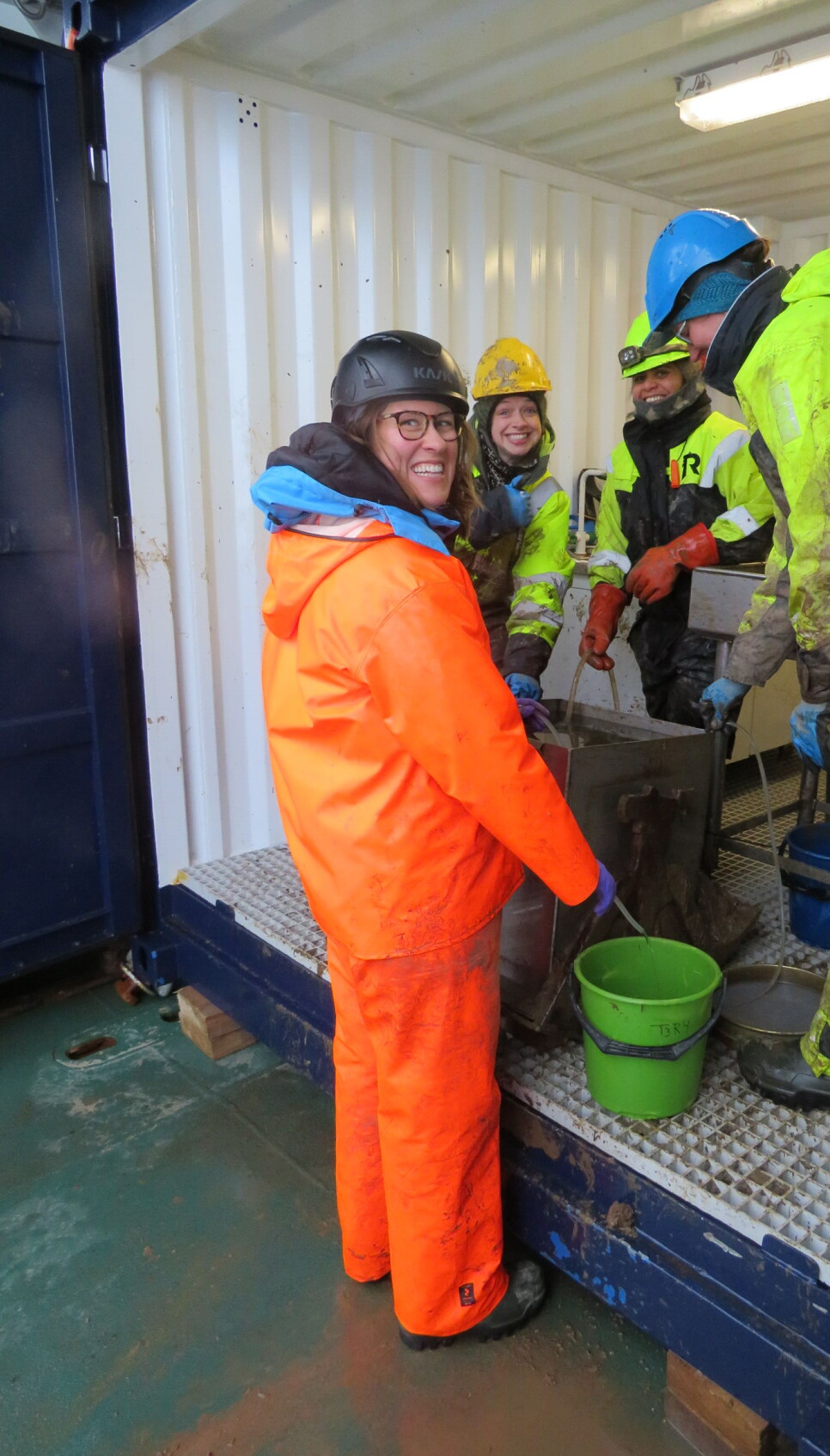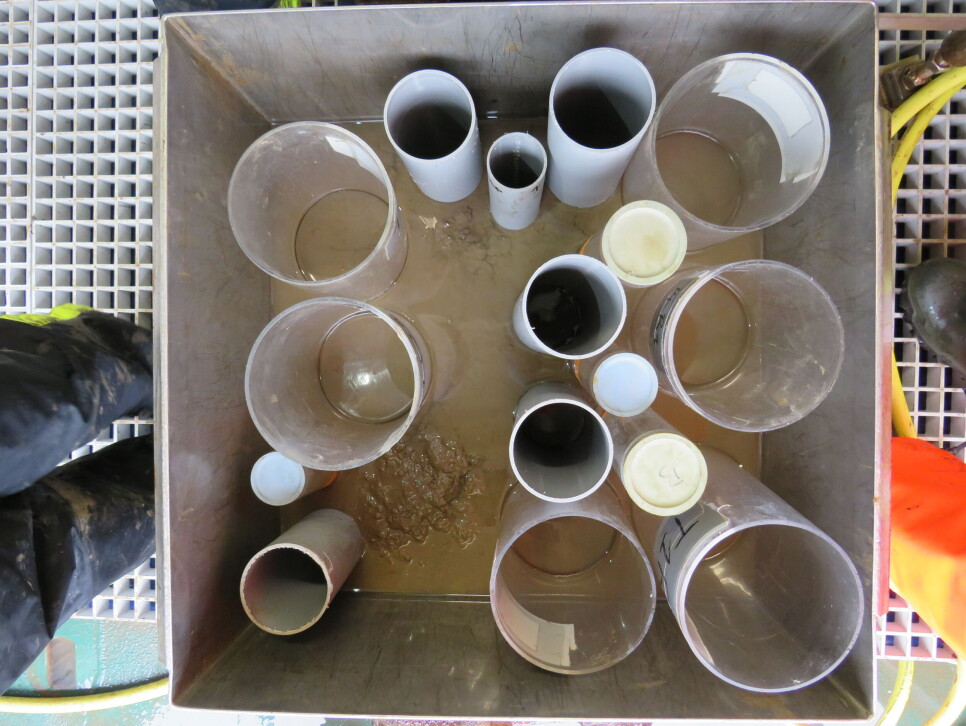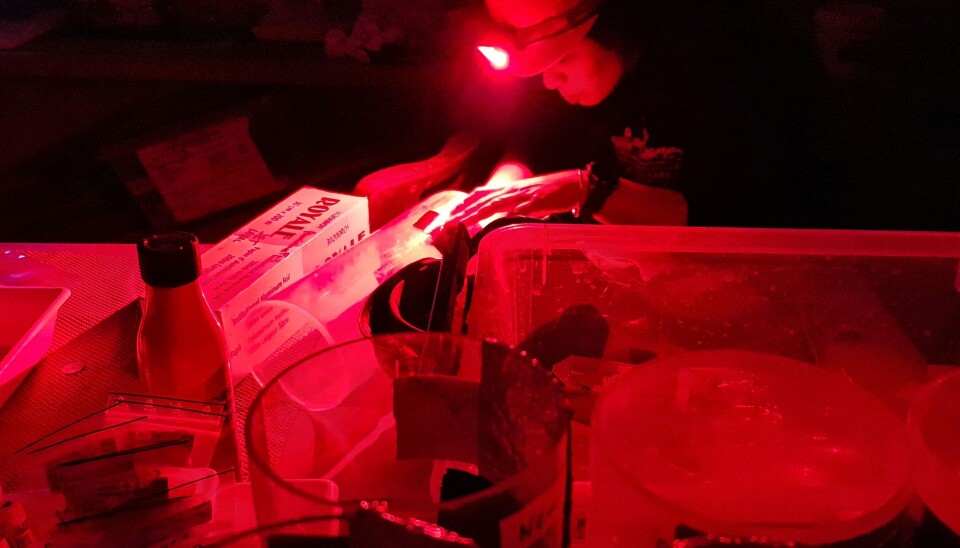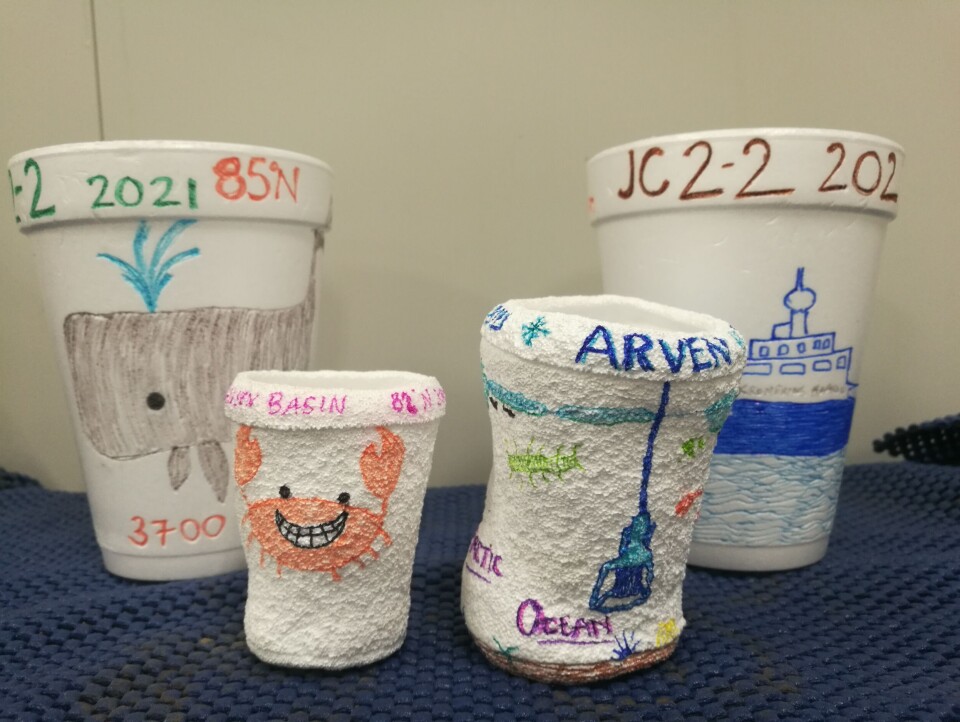
Hardcore science
On the JC2-2 cruise we are visiting the deep basins of the Arctic Ocean. The goal of my team is to conduct experiments with animals from the bottom of those basins, which means keeping deep, Arctic animals alive. If deep-sea diving is an extreme sport, then this is definitely extreme science.
Seriously, keeping animals alive that live in pitch dark, at below freezing temperatures and under crushing pressure isn’t trivial. So here is a little hardcore science guide.
Right at the start there is a challenge; reaching and retrieving seafloor animals in the first place. We are lucky enough to have a world renowned ship capable of decimating sea ice thick enough to land a jumbo jet on, but reaching the bottom of the ocean is another matter. Our target locations are 4000 m below us. Recreational divers only go down to 30 m. That’s like climbing a tall tree when you need to climb to the summits of the Alps. We don’t have fancy robots at our disposal on this cruise, so instead we put our faith in a heavy metal box.
From the ship, with a winch and some very strong wire, we lower a box core, that, as the name implies, literally boxes up a piece of the seafloor which we then reel in. It might look clunky, but it is a time tested piece of equipment invaluable for anyone studying the seafloor. It doesn’t depend on complicated machinery or circuitry, but rather makes use of natural forces, like gravity, to sink into the seabed. Nonetheless, blindly lowering a box kilometers beneath the ship brings out superstition and even prayers into our very scientific agenda. Here is a video showing it in action:
NTNU Oceans

Once we have a chunk of the seafloor and all its inhabitants on board with us, the next challenge is keeping the animals alive. There is no light at 4000 m depth. We don’t want to blind the ones that aren’t blind to begin with, or influence their behavior by shining a torch on them. So we keep them in the dark. That means when we check up on them or take any measurements, we can’t use light either. But unlike my cat, I am pretty inept at slinking around in the dark, so the solution is using red light.

Red light doesn’t travel very far in general, and even less so in water (the reason why many deep sea creatures are famously red). Plus red light has the lowest energy on the visible spectrum, in other words, it is dim and the least disruptive. That’s why everyone on board has very strict instructions to enter our experimental rooms with red light only.
Other than dark, another characteristic feature of the seafloor is that it is cold. On the Arctic seafloor, we actually reach negative temperatures (the reason the whole Arctic seafloor isn’t one giant block of ice is because saltwater freezes at lower temperatures than 0°C). And that is one limitation in our setup; we keep our rooms very cold, but we can’t get down to subzero temperatures.
Of course there are walk-in freezers on board, but those are considerably colder, plus our electronics and other gear would be severely compromised at freezing temperatures. Furthermore, our labs have taps and pipes with both fresh and saltwater and just like our pipes at home, they can freeze. Unless we want to bring the wrath of the entire crew upon us, destroying the ship’s plumbing system is out of the question. Science can have some very ordinary, everyday limitations! What this means is that we, and our deepwater guinea pigs have to make do with a balmy 0 degrees Celsius.

And finally, there’s the pressure. For every 10 m you go down in the ocean, pressure increases by 1 atmosphere (how much pressure we feel sea level). That means, these animals, at 4000 m depth are experiencing pressure 400 times more than what we feel on land. You can see this squeeze in action in foam cups we sent down.

And the reverse is true as well, the infamous, supremely ugly blobfish is a classic example of how pressure can mess up a deep-sea animal (including its appearance). So you might think the answer lies in pressure chambers. But here is a quirky physics factoid: it is only air that gets compressed, not water. Fish, which have air filled sacs (called swim bladders) cannot be brought up alive from depths because the air in their air sacs decompresses and expands, exploding their guts on the way up. But the sediment dwelling animals we study don’t have air within their bodies. And so they don’t distort as a result of decompression and turn into hideous blobs. Sure, they might not be as happy and as active as if they were under pressure as in their native habitat, and we do keep that caveat in mind when interpreting our results. If you step into our cold, dark rooms (with red light!), you will see live and all things considered, fairly healthy deep-sea animals.
So, the guide to extreme science isn’t always extreme methods! Keep it simple, stupid.







